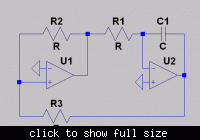goldsmith
Advanced Member level 6
- Joined
- Dec 14, 2010
- Messages
- 3,981
- Helped
- 741
- Reputation
- 1,486
- Reaction score
- 726
- Trophy points
- 1,413
- Location
- Tehran - IRAN
- Activity points
- 24,546
Again hi my friends
Hi
I tried to change the frequency of that triangle wave , but i need a little help here . is it possible that you guide me for that, please?
Best Regards
Goldsmith
Hi
I tried to change the frequency of that triangle wave , but i need a little help here . is it possible that you guide me for that, please?
Best Regards
Goldsmith

